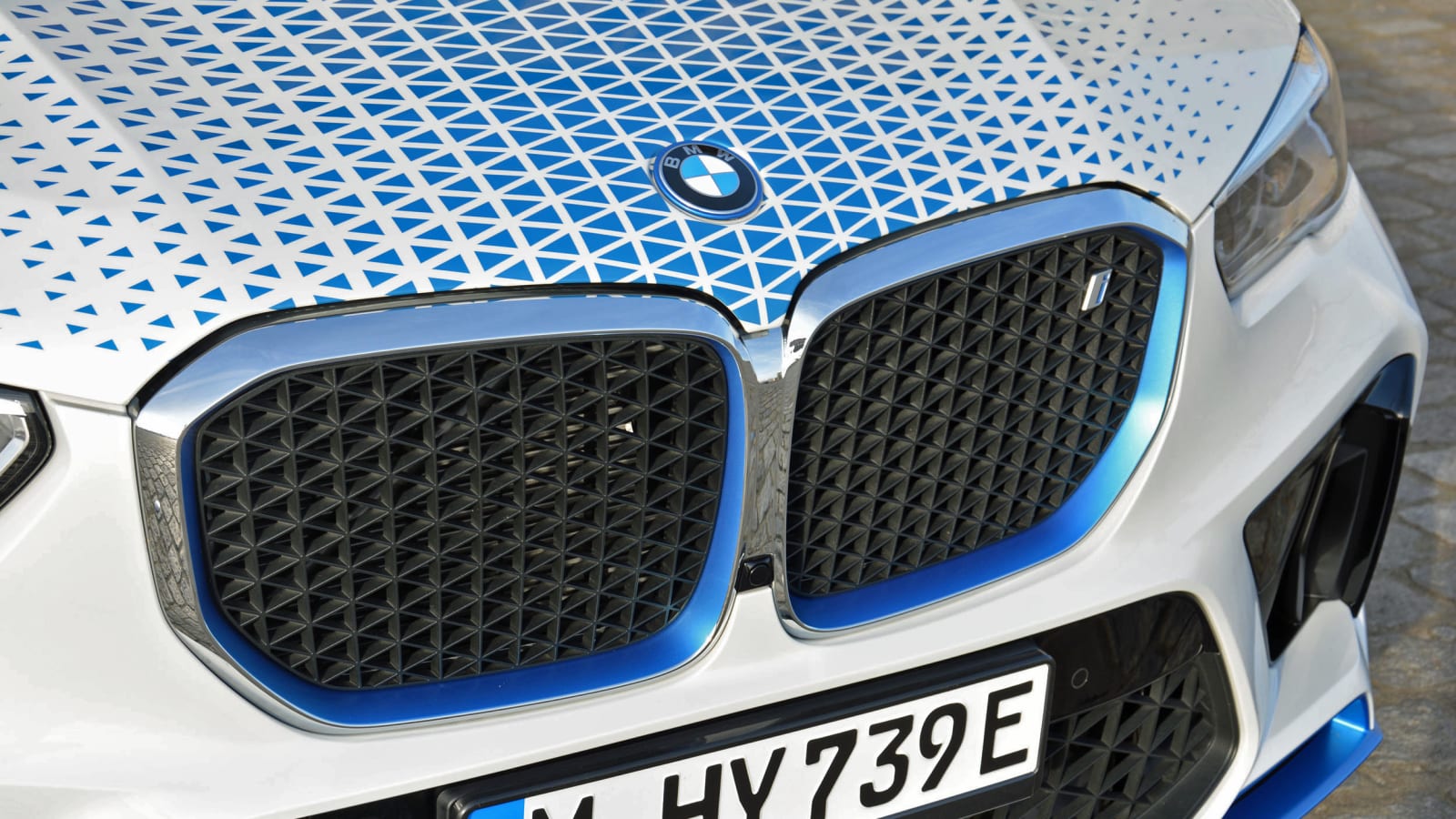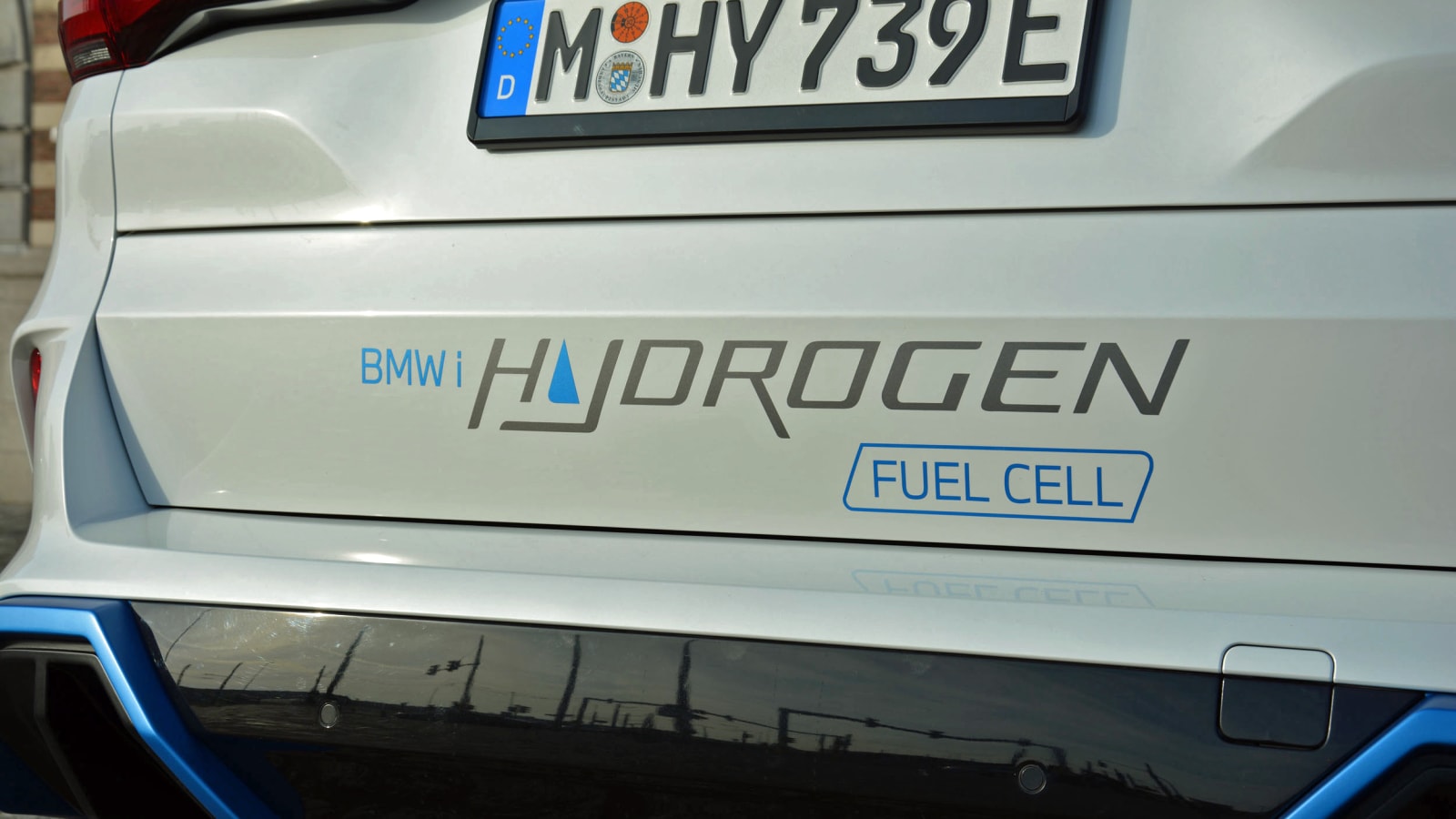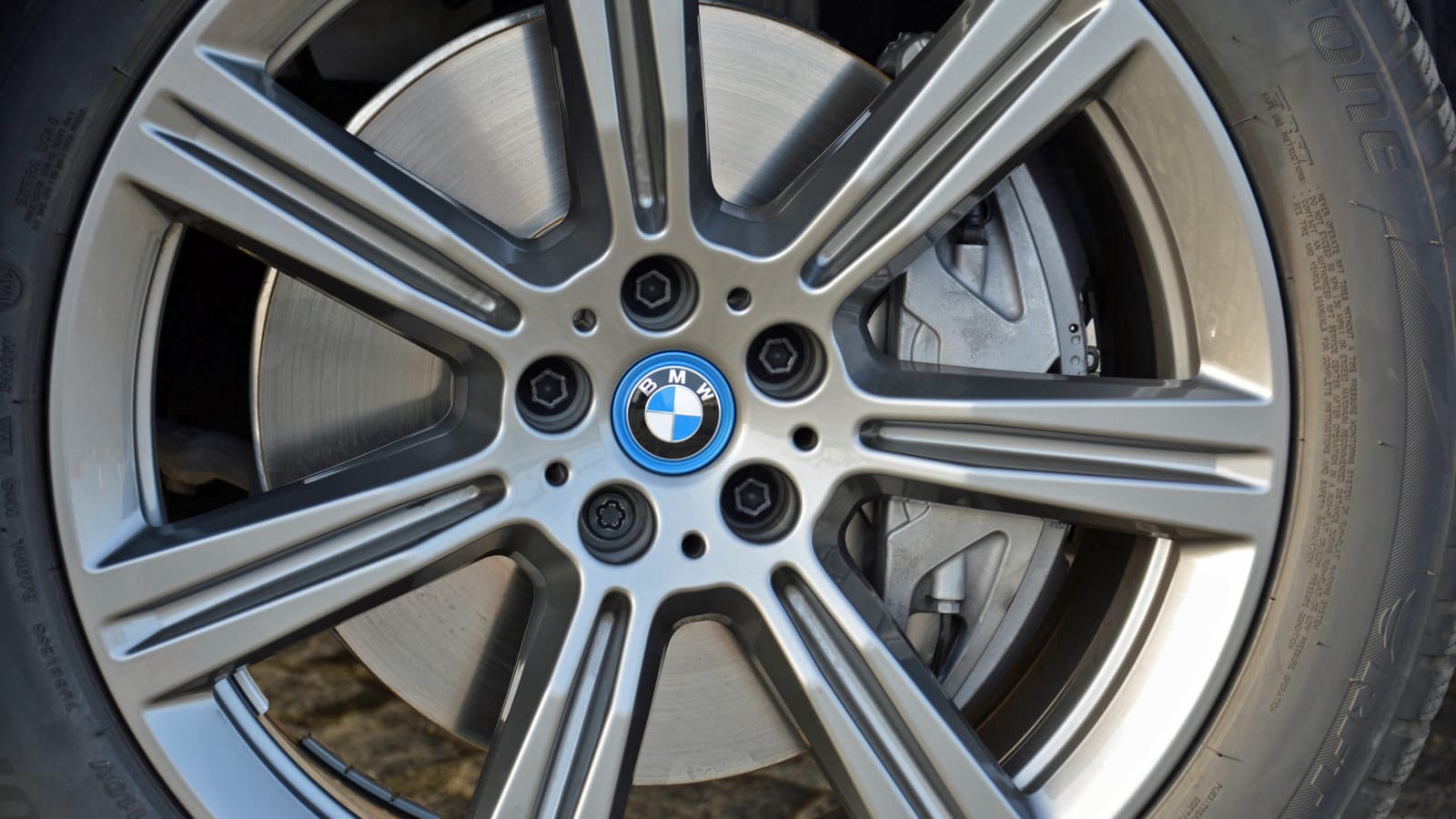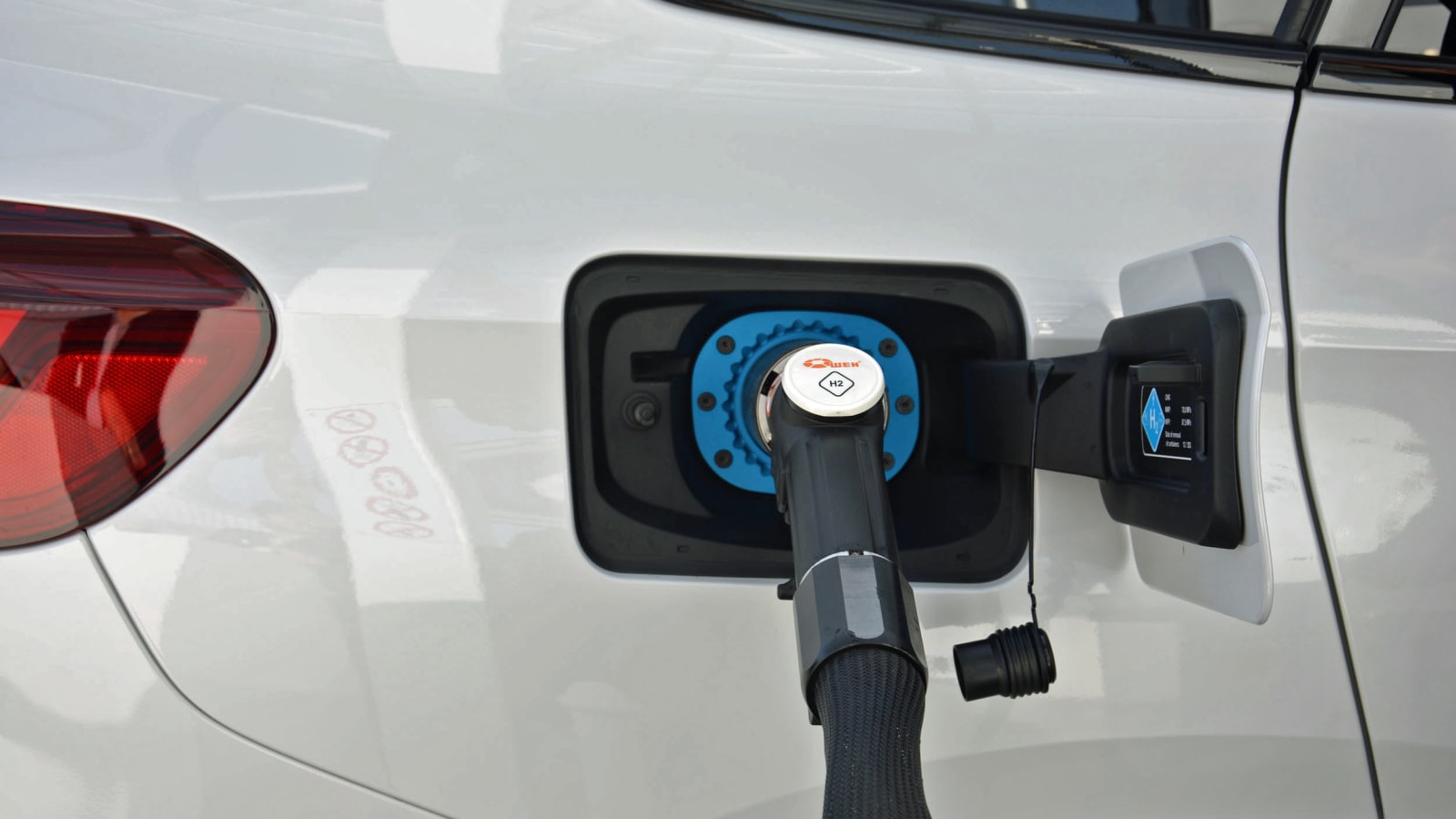2023 BMW iX5 Prototype First Drive Review: The future isn’t (battery) electric

ANTWERP, Belgium – “Range is going to be a problem forever in electric mobility – especially if you want to have affordable products,” BMW boss Oliver Zipse said. That’s a shockingly blunt statement from a firm with a growing lineup of EVs, but it explains why executives are leaving room in the range for hydrogen-powered cars.
On paper, it’s an argument that holds water: a hydrogen-electric car requires a much smaller battery pack than a comparable electric car, it offers the same amount of driving range regardless of the outside temperature, and it can be refueled as quickly as a gasoline-burning model. Zipse clarified that BMW isn’t developing hydrogen technology as a replacement for EVs; they’re two similar powertrain technologies that complement each other. Electricity is best suited to smaller cars, he noted, while hydrogen is better for bigger vehicles, especially those that regularly embark on long trips while towing something heavy.
Fair enough, but what does this mean in real life? BMW developed a hydrogen-electric, X5-based prototype called iX5 to find out, and I was one of the first people outside of the company to drive it.
BMW began experimenting with hydrogen technology well before most of its peers and rivals. In 2005, it released a 7 Series-based prototype called Hydrogen 7 that was fitted with a 256-horsepower, 6.0-liter V12 modified to burn hydrogen (it could also run on gasoline). It worked well, about 100 units were built and tested, but the project was shelved. One issue was efficiency; another was that the engine wasn’t 100% emissions-free.
“It’s still possible, there will be some manufacturers who do that, but we think it’s not the right strategy because we have EVs. If we didn’t have the electric cars we might think differently. The similarity of a fuel-cell vehicle to an electric vehicle is so close – much closer than to a gasoline-powered combustion engine – and that changed our opinion. That question is answered,” Zipse said.
In hindsight, the Hydrogen 7’s main contribution was showing BMW what not to do.
Over four years in the making, the iX5’s drivetrain is simultaneously complex and simple. It’s complex in the sense that the electricity that zaps the rear wheels into motion is generated onboard. It’s kind of like the wood gas-powered generators that were common across Europe in the aftermath of World War II, or like if BMW built a gasoline-powered X5 with a miniature oil refinery stuffed into the engine bay.
With that said, you don’t need a master’s degree in chemistry to understand how it works. Gaseous hydrogen enters the two, 700-bar tanks via a filler integrated into the passenger-side quarter panel, in the same place where you find the fuel filler in a gasoline-burning X5. From there, it goes to the fuel cell under the hood where it reacts with oxygen from the air to create electricity. The water vapor emitted by this process gets released into the atmosphere, while the electricity generated travels through thick, orange wires to a roughly 2-kWh lithium-ion battery pack mounted under the trunk floor, right over the electric motor.
The fuel cells come from Toyota, with whom BMW has a partnership (it’s not just the Supra and Z4, you know), and the motor is sourced from the iX. That’s the gist of it. Of course, this process relies on hundreds of smaller components including an air filter, a compressor, a high-voltage coolant pump, a humidifier with an air cooler and a control unit. It’s too early to predict the drivetrain’s reliability and longevity, but BMW already warned that parts like the storage tanks will need to be replaced after 15 years – it’s a legal requirement in numerous countries.
BMW pegs the system’s total output at 401 horsepower, and the roughly 5,500-pound iX5’s driving range checks in at up to 313 miles when tested on the WLTP cycle used in Europe. Hitting 60 mph from a stop takes around 6 seconds. It doesn’t take a great deal of powertrain wizardry to achieve these figures with a battery-electric drivetrain, and a 10-year-old V8 can easily post the same numbers, but the main selling point here is that filling the tanks with around 13 pounds of hydrogen (that’s the maximum they can carry) takes three to four minutes. It’s not faster or slower than filling up a tank with gasoline.
Promising? Certainly, but the iX5 isn’t ready for prime time and neither is its powertrain. BMW stresses it’s a prototype built exclusively to test the technology in real-world conditions. This partly explains why the iX5 is rear-wheel-drive. As it stands, there’s not enough space under the hood to add the second electric motor required for all-wheel-drive, though I’m told this is on the engineering team’s to-do list.
Jürgen Guldner, the hydrogen program’s general manager, told me that iX5 production will be limited to under 100 units. Some will be used as demonstrators – BMW notably needs to convince lawmakers that hydrogen is a viable alternative to electric technology – while others will be loaned to a handful of real-world motorists.
“We’re planning to have short-term loans, maybe for a week or so, so that people can give us feedback,” he explained.
This approach isn’t unprecedented. In 2008, BMW built a handful of electric Mini prototypes for a similar pilot program launched to gain knowledge about EVs. The loans will be much shorter this time around, however.
“Based on the experience [we got from the Mini project], we decided it’s better to give [the car] to more people rather than just one,” Guldner explained.
BMW plastered its prototypes with powertrain-specific decals so you can’t mistake one for a run-of-the-mill X5. Without them, the iX5 would still stand out thanks to styling cues such as blue accents, a subtle “i” emblem in the grille, and new-look wheels. Inside, the iX5 gains “hydrogen fuel cell”-branded sill plates, the same emblem on the passenger’s side of the dashboard, a smattering of blue trim, plus redesigned graphics in the instrument cluster and infotainment system. There’s a useful menu that tracks real-time hydrogen consumption and another one that helps the driver find the nearest fueling station … which can be hundreds of miles away, depending on where you are (though I’m assured that will change in the not-too-distant future). Don’t look for a frunk; the fuel cell hogs all of the space.



Admittedly, there’s not a ton to say about how the iX5 drives – and that’s the point. It’s a lot like the plug-in hybrid X5 when it’s running on battery power, meaning smooth and silent, or like what I imagine a battery-electric X5 would feel like. Nothing about the driving experience suggests that the electricity comes from an on-board fuel cell rather than from a charging station; the system makes no noise (unless the driver switches on the artificial powertrain noise, then it sounds like the iX), and the water vapor emitted is only visible on a cold day. From the driver’s perspective, the iX5 accelerates and brakes just like an electric car, which is pretty much what it is (unlike the old, hydrogen-burning 7 Series prototype). It’s quick off the line thanks to the instant torque, and the brake pedal inevitably feels a little artificial.
Handling is relatively difficult to evaluate, and not merely because twisty roads in northern Belgium are about as common as mile-long stretches of straight pavement in the Alps. BMW doesn’t make a battery-powered X5 to compare the iX5 to, and the experimental SUV has no direct rivals – there’s no hydrogen-fueled version of, say, the Mercedes-Benz GLE. The best way to sum it up is that, again, it takes a turn a lot like the plug-in hybrid X5. It’s not as bottom-heavy as most of the big, electric SUVs that I’ve driven (the iX comes to mind, and I’ve taken more than my fair share of turns in it) and not as playful as a non-electrified, rear-wheel-drive X5. The air suspension system’s Sport mode makes the ride markedly firmer (conversely, Comfort softens it up considerably), and a distinct BMW-ness characterizes the steering. It’s not a sports car, and it wasn’t designed to be one, but it also doesn’t float into a bend like a cruise ship.
In normal driving conditions (the ones most of us encounter daily), the iX5 is relaxing and comfortable to drive. The one-pedal driving mode can be engaged by flicking the gear selector to the left into “B” mode, and a pair of steering wheel-mounted paddles let the driver choose one of three regeneration modes. The most aggressive profile makes the brake pedal nearly useless: you can come to a complete stop by lifting off the accelerator pedal. Leave the gear selector in “D” and the iX5 coasts like any other car.
Since this is essentially a regular-production X5 (a model homologated around the world) powered by a zero-emissions drivetrain, why can’t BMW simply add it to its catalog of SUVs and let the market judge its viability? Guldner told me that marketing a hydrogen-powered car isn’t as simple as it might sound. It doesn’t make sense from a business perspective to invest in mass-producing the iX5 if no one buys it, and no one will buy it if there’s nowhere to fill it up. The lack of refueling infrastructure is the biggest hurdle that all hydrogen-powered cars need to clear. Various governments and third-party companies say they’re working on expanding the network of refueling stations, but this is a medium-term project, not one that can be completed in months. Cost is another issue: Guldner believes the cost of buying and running a hydrogen-powered car needs to be comparable to the cost of buying and running an EV, and reaching this point requires scale as well as some heavy lifting on the engineering side of the equation.

BMW believes that hydrogen will merge into the automotive mainstream during the second half of the 2020s, assuming everything goes according to plan. Until then, prototypes like the iX5 play a crucial role in helping this relatively new technology reach maturity. It’s not ready for mass production, but it’s already keeping its promise of loosening some of the constraints associated with driving an electric car.
If BMW’s crystal ball is accurate, hydrogen-electric cars may ultimately top EVs on many shopping lists.
“You already see that in 2027 or 2028 there will be a scarcity of raw materials [needed to build EVs] if we continue to ramp up production. So, that’s where hydrogen comes in,” Zipse concluded. “It uses less raw materials, it’s a much, much smaller battery, the car is lighter, and it does not need the same charging infrastructure. You can more or less use the same [gas station] infrastructure that we have today.”
Related video:





